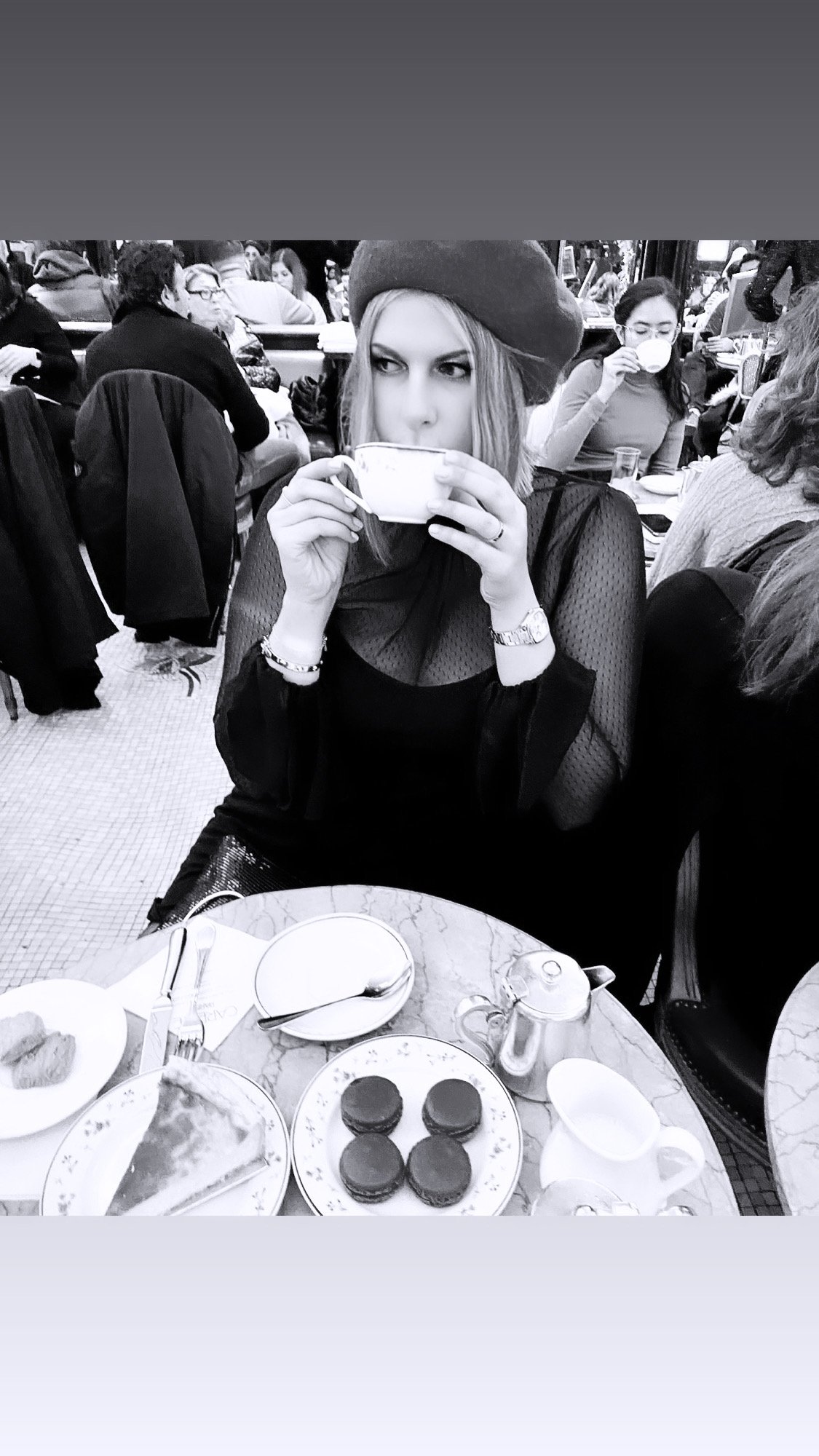"Ascension: Into Lois P. Jones’s 'Night Ladder'" by Aisha Emma Mitrea
The poetry collection Night Ladder, written by Lois P. Jones, was published by Glass Lyre Press in 2017, after winning their Best Book Award. In fact, Jones is a multi-award-winning author, having recently won the 2023 Alpine Fellowship, which took place in Fjällnäs, Sweden. Some of her additional awards include the Bristol Poetry Prize, judged by Liz Berry; the Lascaux Poetry Prize for a single poem; the Tiferet Poetry Prize; and placing as a finalist in the Terrain Poetry contest judged by Jane Hirshfield. She was also a finalist in 2023 for the Mslexia Poetry Competition, judged by Helen Mort, and, in 2022, for both the Best Spiritual Literature Award in Poetry from Orison Books and the Tom Howard/Margaret Reid Poetry Contest. Other honors include a Highly Commended poem with publication in the 2021 Bridport Poetry Prize Anthology, and — in collaboration with filmmaker Jutta Pryor and sound designer Peter Verwimp — her poem “La Scapigliata” won the 2022 Lyra Bristol Poetry Film Competition, and she was a 2023 finalist in the same competition for a collaborative poem written by Elena Karina Byrne and Jones, inspired by the painting Huapango Torero by artist Ana Segovia, and then directed and edited for the screen by filmmaker Janet Lees. Jones is also an editor and radio-host here in Los Angeles, who has been thrice-published in MORIA Literary Magazine, including these pieces in Issue Three — "What Dresses You Each Day in Hardwood" and "She Welcomes the Philosopher Father on His Return from Africa.”
Night Ladder is a collection of poems divided into five sections, each opening with a gripping quote. My own out-of-body reading experience with Night Ladder prompted a candid interview with the author, which provided rare insight into the author’s objective with her work. The book’s forward poem, “Rilke’s Bayon,” which includes the lines, “When your body / twisted up and took over the stones of a crumbling temple / in an attempt to survive. . . // . . . When you knew your prayers / would only fall without ripening,” spoke to me as a reader. With such a pronounced introduction, one can only anticipate the depth of the work to come in the poems themselves, which prompted my first question to Jones: does the context of the book (its collection of pieces) stem from a personal experience of tragedy? Jones commented that “though Night Ladder does not set out to be autobiographical, it does contain — like most first collections — either direct experience or allusions to events which take on some form of truth.” Jones, a master of metaphor and myth, mentioned the way abuse can echo or ripple across families and the need for “masking” her personal tragedies. Her poetry reflects Eastern spiritual practices, insofar as it strives for “transmitting a more enlightened view” and “transcending its earthly, often challenging, roots.” This statement, written like a true poet, seems set to a timbre reminiscent of Chopin’s Nocturne No. 20 in C Sharp Minor.
The book’s poem, “Milonga for a Blind Man,” includes an epigraph from Jorge Luis Borges — “Time is both loss and memory” — that harnesses the collection’s central thesis. In that, it is absolute. This piece transcends the idea of humanity at its finest, by depicting sorrow, ever so slightly romantically: “In the middle of the night / he climbs to the top of the stairs. / From his balcony he remembers daylight.” The loss of sight references that most valuable of human abilities, but the spirit — however fragmented — remembers. Jones’s dance (a “milonga” is a style of South American dance) to the blind author explores the ideas of illusion and time: “Perhaps that is the essential duty of the ladder in my title, which is neither vertical nor horizontal but scaled or descended through the rungs of perception — the perception outside time.” Her work incorporates messages of an enduring spirit, soul, and eternal love, which can function as cliched topics in the poetic tradition. However, Jones’s collection exhibits these themes in a newfangled, unexpected manner.
The complex, layered imagery resonates in such pieces as “Picasso’s Garden,” a painter famously known for “reason, romance, and revolution.” Jones paints us a picture of la douleur exquise (the exquisite pain) of loving someone unattainable. The poem is inspired by Picasso’s 1938 abstract portrait of French photographer, painter, and poet Dora Maar, Seated Woman in a Garden. The female speaker and her subject — the great painter — fall into an unsustainable love in this poem, perhaps driven by the attitude now quite generally associated with him, which Jones sums up as: “Picasso said women are suffering machines, and he certainly had the machine to make them suffer.”
He tears from my skin
like a necessary thorn, . . .
He plants me next to hollyhocks and winged seeds
of pine, places his paint brush in the tomato can
and demands I grow near wisteria . . .
. . . I endure the scent of peat on his lips,
pack his brushes and pretend he is leaving. But we carry
one another’s seed. He will chase me into the afterlife.
The poem speaks to the artwork, as though through an intentional and synchronized connection. Jones’s words seem to emit from a stroke of the painter's brush, as if an animation of the art and as an example of classic human trials both depicted and reinvented. As Jones explains, “‘Picasso’s Garden’ is an ekphrastic piece,” and thus suggests her fascination with the art that depicts Picasso’s lovers, Maar in particular, and their tragic, “compulsive need to remain his subject.” Picasso’s documented cruelty to his female subjects is compelling. In a self-reflective admission, Jones mentions her own battle with narcissism in past relationships, which might suggest why this material spoke to her.
The cover art depicts an otherworldly optical illusion of a small reality. “When I came across Andy Kehoe’s painting, Bearer of Wonderment, and the beast’s anthropomorphic image, with its tree-like antlers reaching toward the wintering branches of the trees, it felt right. Not only right but somehow personal to me. There was a sense of kneeling to the sacred and the world of awe.” Jones searched for months to find the correct piece to depict a glorious bewilderment and — given her collection’s title — toyed with the idea of ladders for the cover. But ultimately she selected, in my opinion, the precise one. With such beauty, cover to cover, I wondered which piece, if any, was most treasured?
I can’t honestly say I have a favorite. I can say there is a passage in a poem called “Splendor” which speaks to the metaphysical place I want to inhabit. I came across a photograph which captured the world from the inside of a cello. It was as if you were a small figure standing inside this grand wooden hall, sunlight streaming through the f-shaped holes. It felt like a juxtaposition of the ancient and the new, the past and the present, all existing at once:
What the photographer captured
when she slipped the lens
inside the cello to reveal
the prayer that burns inside
every instrument
and you stood in its teak room
awash in the cleft of light
reserved only for the echoing notes
of Bach’s holy chamber.
I took nourishment from reading Night Ladder and felt a matching sentiment for its author. This reading experience has propelled my desire to continue my own personal self-exploration. I have felt lost — a sentiment I’m sure is shared by many of our readers — as our world has darkened, seemingly without sight and seeking an otherworldly outlet. We’re in a moment that has brought us to our knees, praying for relief. The shatter of a heart, of a hope, that transcends us. The mask we wear to shelter the pain below the surface, and the beauty that forms from these conditions is the artistry that Jones composes with every syllable. A triumph!
Her future projects include one related to one of the poems in Night Ladder, the poem entitled, “Rilke’s Maid, Leni, at the Little Castle of Schloss Berg.” Rainer Maria Rilke is an Austrian poet and muse to Jones: “I loved that Rilke called Leni climatic. In a way, this is what all artists crave — a partner whose sensitivity would allow them the space and care necessary for creation. Someone who respected the need for quiet hours without interruption.” As a student of Architecture, I, too, crave this kind of understanding and generosity in a partner. On a personal level, this perceptive insight serves as a catalyst in my future endeavors.
Jones’s own poetic explorations for this next project, started in 2017, have taken her “to Muzot, where Rilke penned the Sonnets to Orpheus and completed the Duino Elegies, and to his burial place in Raron, Switzerland, high up on a hill, looking out over the Alps. It has taken me to the interior worlds of my own through the silence of theirs — the harsh winters they lived through — through all the seasons of their making.” Dedication to craft is something we must all strive for — I look forward to reading her future work. I cannot thank our author enough for the honor of this review, truly.
Aisha emma mitrea
Editor-at-Large for Issue 12! She is a student of Architecture at Woodbury University, as well as an Architectural Engineer / Project Manager / Set Designer / Contractor, from La Jolla, California. Of European and Middle Eastern descent, she is able to speak five languages. She is also an aficionado of classical art, music, and literature. She spent her summers in the library, partaking in national reading competitions, and — in her early years — was a published writer of award-winning poems and short stories.

